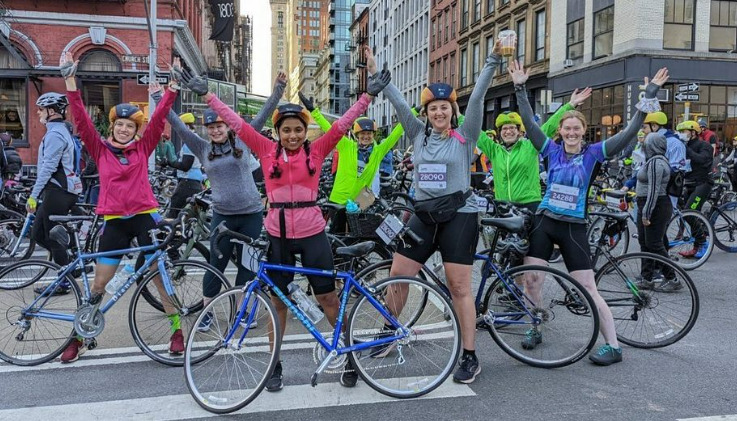By Meg Ausen
WE here at WE Bike NYC do all WE can to build a community of cyclists. Part of this includes arming people with knowledge and skills, because knowledge is power! Whether it’s learning the names of the parts on your bicycle at Bike Parts Bingo or practicing bike maintenance with our friends at NYC Mechanical Gardens Bike Coop, WE know that the more you know, the farther you will go! One of our more popular workshops that WE introduced in 2016 is a falling workshop, which teaches folks the motions of falling properly in efforts to best prepare them in case they fall. After all, WE can do countless things to ride safely and protect ourselves on the road, but we cannot control the actions of others and therefore crashes are a reality. Below are some tips in case you are ever in a crash or you witness a crash. Obviously the tips below are contingent on how serious the crash is and the level of mobility/awareness you are able to maintain after the crash. Remember to keep these tips in mind in case you witness a crash as they also apply when you are not the victim.
Try to stay calm and collect yourself slowly – much easier said than done, but if you can take some deep breaths to calm your nerves after a crash, you will likely be in a better position to recall important details of what led to the crash and to assess your injuries. Adrenaline is an amazing thing and it is not uncommon for individuals to walk away from a crash not realizing the degree of their injuries until several hours or days later. Crashing is a very traumatic experience – taking as much time as you need to gather yourself is 100% okay!
Call for help – whether it’s 911 or an emergency contact, it’s best to get others involved as soon as possible. Were there witnesses to the crash? If so, don’t feel shy about asking them to give a statement for a police report. Related to calling for help: tell people when you are going on a ride (even a short commute) and tell them when you have arrived at your destination. It’s extremely easy to forget to communicate with others about when and where you are riding, but doing so can be a huge help in the case that a crash occurs.
Create a safe space – try to use your bicycle as a barrier (either moving it yourself if injuries are minor or asking if a witness can move it or create a different type of barricade) to give yourself space after the crash. The last thing anyone needs to deal with during the aftermath of a crash is traffic continuing to travel in close proximity. If you are able, relocate to a safe space such as a sidewalk or park bench to move yourself out of traffic’s way.
Do what you can until help arrives – if injuries are more serious, try your best not to move as it could exacerbate the injuries. Do not remove your helmet or eat or drink water. In the case of a head injury/trauma, talk out loud and try to form coherent thoughts, even if you are by yourself.
Report the crash – whether to the police or to a different agency (like the Department of Transportation if your crash occurred due to an unsafe road condition), it’s important to report what happened. The sooner you can report the crash, the better, since details will likely be more fresh in your mind. Tell several people you know – walking through the details multiple times will not only help in situations such as filing a police report, but it will also help in the mental recovery process that lies ahead.
Always seek medical help – remember how we said that an adrenaline rush can mask the severity of injuries? Even if you are able to walk away from a crash with minor bumps and bruises, it’s always wise to see a doctor if possible to confirm whether or not your injuries are minor or if they are more severe.
If you have any tips to share, join us in the conversation at the Female Bike Forum on Facebook!
